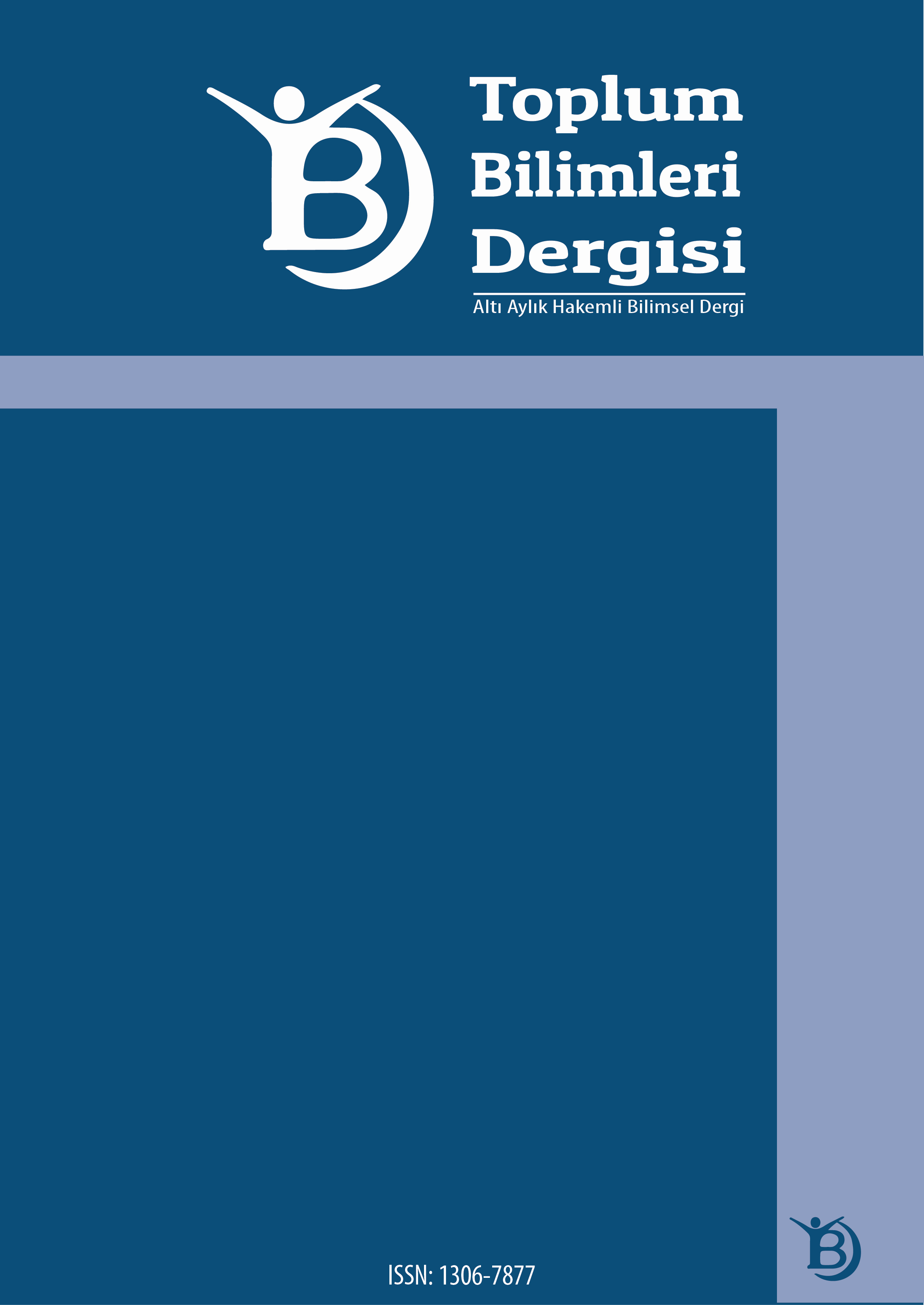Author :
Abstract
Çalışmamızda Kur’an’ı Kerim’in doğru anlaşılmasında önemli bir rolü olan müşkilu’l Kur’an ilmi Ebu’l Berakât en-Nesefî’nin Medârikkut-Tenzil ve Hakâikut-Te’vil’i çerçevesinde incelenmektedir. Kur’an’ın ilk muhatapları vahyi en
doğru şekilde anlayan ve hayatına tatbik edenlerdir. Kaynak toplum diyebileceğimiz vahyin ilk muhatapları, vahyi anlama ve uygulama düzeyinde problem yaşamamışlardır. Ancak evrensel ve son olma özelliği taşıyan Kur’an’ın sonraki asırlarda anlaşılmasında zorluklarla karşılaşılmaktadır. Sonraki asırlarda ayetlerin anlaşılmasında ortaya çıkan bu zorluklar sosyal, tarihsel ve dilbilimsel değişim olgusunun tezahürüdür. Bu sebeple çalışmamızda müşkile sebep olan ayetlerin tespitiyle birlikte, müşkili gidermede kullanılan bağlamsal, dilbilimsel ve tarihsel yöntemler ele alınmaktadır.
Keywords
Abstract
Müşkilu’l Kur’an İlmi, which is important in understanding the Holy Qur’an correctly, in analysed in this study within the framework of Ebu’l Berakat en-Nesefi. Those who were first exposed to Qur’an were the people who understood the revelation most correctly and applied the principles to their lives accordingly. The first people to be exposed to revelation did not have difficulty in understanding and implementing the principles. Yet, there are difficulties
in understanding the divine knowledge which is considered to be the last and universal in the following centuries. Those difficulties in understanding the verses of the Qur’an arising in the following centuries are the manifestation
of the phenomenon of social, historical and linguistic change. For this reason, contextual, linguistic and historical methods to eliminate the difficulties in addition to determining the verses causing difficulty in understanding are
considered in this study.
Keywords
- Albayrak, Halis (2011), Tarihin İçinden Kur’an’ı Algılamak, İstanbul: Şule Yayınları.
- Albayrak, Halis (2009), Kur’an’ın Bütünlüğü Üzerine, İstanbul: Şule Yayınları.
- Aydın, Muhammed (2001), Kur’an’da Benzer Ayetlerdeki Anlatım Farklılıkları, Adapazarı: De- ğişim Yayınları.
- Candan, Abdulcelil (2014), Kur’an Okurken Zihne Takılan Ayetler, İstanbul: Düşün Yayınları.
- Cerrahoğlu, İsmail (2003), Tefsir Usûlu, Ankara: Türkiye Diyanet Vakfı Yayınları.
- Cündioğlu, Dücane (2011).Kur’an Çevirilerinin Dünyası, İstanbul: Kapı Yayınları.
- Çiçek, Yakup (1995), “Müşkilu’l Kur’an,” MÜİFD, sayı 13.
- Demirci, Sabri (2005), Kur’an’da Müşkül Ayetler, İstanbul: Nesil Yayınları.
- en-Nesefî, Ebü’l-Berekât Hâfızüddîn Abdullah b. Ahmed b. Mahmûd (2011), Medâriku’t-Tenzîl ve Hakâiku’t-Te’vîl, tah. Yusuf Bideyvi, Beyrut, Dâr-u İbn-i Kesir.
- et-Taberî, Ebû Ca’fer Muhammed b. Cerîr b. Yezîd el-Âmülî el-Bağdâdî (1988), Câmi’u’l-Beyân ‘an Te’vîli Âyi’l-Kur’ân, Beyrut: Dâru’l Fikr.
- İbn Kuteybe (1973), Te’vilü Müşkili’l Kur’an, Kahire.
- İbn Manzur, Cemalu’d-Din Muhammed b. Mukerrem (1956). Lisanu’l-Arab, Beyrut.
- Topyay, Yusuf (2016), Kutsal Kitap’ta ve Kur’an’ı Kerim’de “Nefs” ve “Ruh” Sözcüklerinin Artsü- remli (dıachronıc) Semantik İncelemesi, Yayımlanmamış Doktora Tezi, Ankara.
- Özsoy, Ömer (2004), Kur’an ve Tarihsellik Yazıları, Ankara: Kitabiyât Yayınları.
- Öztürk, Mustafa (2011), Kur’an,Tefsir ve Usul Üzerine, Problemler, Tespitler, Teklifler, Ankara: Ankara Okulu Yayınları.
- Öztürk, Mustafa (2013), Tefsirin Halleri, Ankara: Ankara Okulu Yayınları.
- Serinsu, Ahmet Nedim (2012), Kur’ân ve Bağlam, İstanbul: Şule Yayınları.
- Yerinde, Adem (2007), “Müşkil Ayetler ve Etrafında Oluşan Bilimsel Edebiyat,” SÜİFD, sayı 16.
- Yıldırım, Suat (1983), Kur’ân-ı Kerim ve Kur’an İlimlerine Giriş, İstanbul: Ensar Yayınları.





